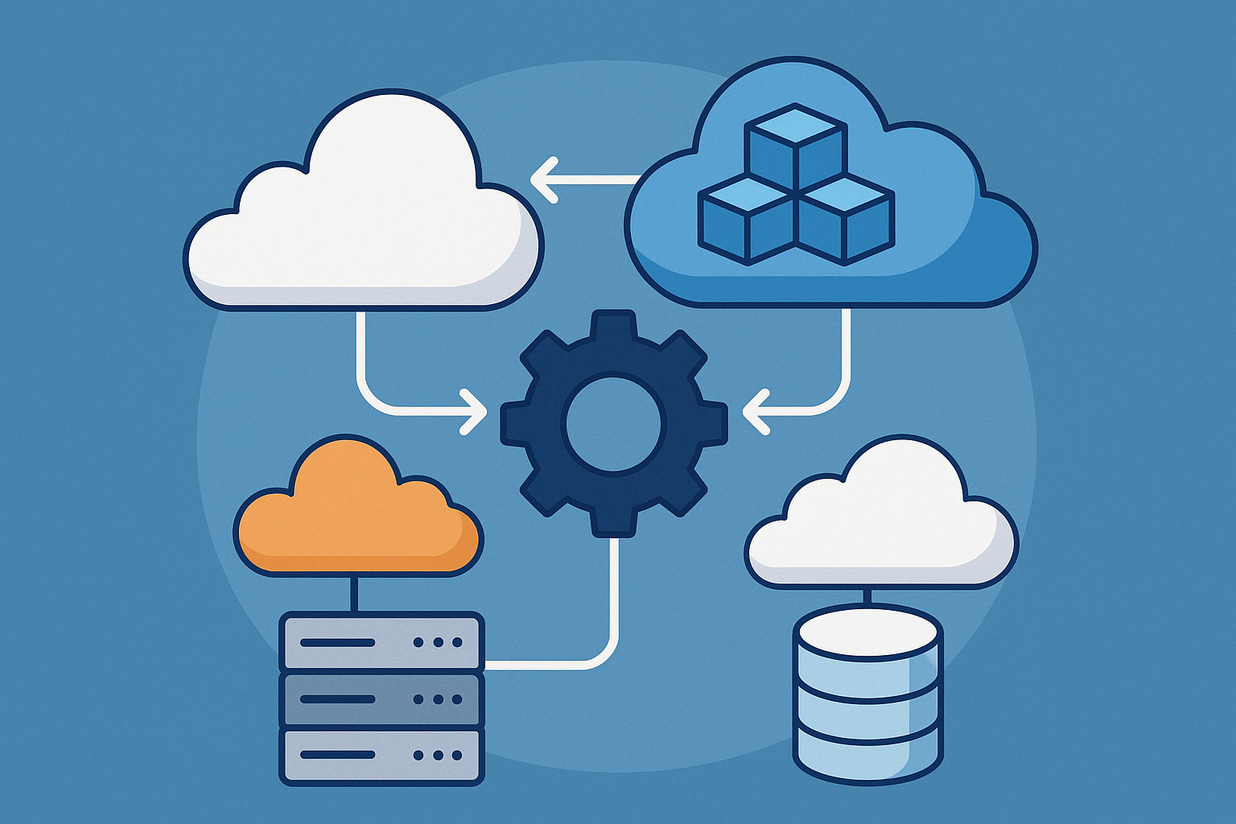
Aligning Spagic with Various Cloud Environments
Migrating to a hybrid cloud setup has become essential for many organizations. Today, companies often combine on-premises systems, private clouds, and public clouds to meet different operational needs. This is where Spagic excels as a middleware platform, offering consistent control across these environments.
In a hybrid cloud model, parts of an application might run on AWS or Azure, while critical data stays on internal servers. Without a strong integration layer, managing these mixed systems becomes challenging. Spagic acts as a bridge, connecting different platforms and ensuring smooth data flow.
Beyond basic connectivity, hybrid cloud strategies demand monitoring, security enforcement, and the flexibility to adapt to new services. Spagic is well-suited for orchestrating complex integration flows across large systems.
Extending On-Premises Capabilities with Spagic
For enterprises with existing data centers, full cloud migration isn’t always possible. Some workloads must stay on-premises due to latency, data residency, or compliance needs. However, organizations still want the scalability and automation that cloud platforms offer.
Spagic helps extend on-premises systems by exposing services and bridging APIs. For instance, an internal database can be made accessible to cloud apps using Spagic flows—no need to rewrite the original system.
This setup maximizes legacy system value while opening the door to modern solutions. Teams no longer need to choose between cloud and on-prem. With Spagic, they can use both—without losing control.
Connecting Cloud Applications to Internal Systems
One major challenge in hybrid cloud is connecting cloud-based applications with internal business systems. For example, the marketing team might use a cloud CRM, while sales data stays in an on-prem ERP. Without proper integration, data silos emerge.
Spagic enables secure integration flows between these systems. Data moves through secure tunnels, filtered and protected at every step. The original systems remain untouched because the integration logic lives within Spagic.
This method not only ensures smooth data transfer but also adds transparency. Every flow can be logged, monitored, and debugged for reliable operations across cloud and on-prem systems.
Security as the Core of Hybrid Integration
Security is critical when combining cloud and on-prem systems. Every connection point could be a risk if it’s not properly secured. Hybrid environments require strong authentication, encryption, and access control at all endpoints.
Spagic supports secure protocols like HTTPS, OAuth, and mutual TLS. It integrates with external identity providers and generates audit trails for each process. This offers administrators full visibility and control.
Security isn’t just about compliance—it builds trust. With Spagic, you can run integration tasks confidently, knowing your data and systems are safe.
Streamlining Deployment with Containerization
Teams using Kubernetes or other container orchestration tools benefit when the integration platform is container-ready. Spagic can be deployed as a container image, making it easy to run in any environment.
This setup works on both on-prem clusters and cloud-based Kubernetes platforms. Consistent behavior and configuration mean no need to rewrite deployment logic—just update the settings.
Containerization also allows dynamic scaling. During busy periods, Spagic pods can scale up. When traffic slows down, resources are scaled back—saving cost and computing power.
Observability and Monitoring for Better Insights
Integration is not just about connection—it’s about visibility. In hybrid systems, issues like latency or timeouts can affect performance. Observability tools are crucial for identifying and fixing problems.
Spagic logs every integration step, from input to output. It can alert teams about errors, timeouts, or data anomalies. These alerts can integrate with tools like Prometheus, ELK Stack, or other APM platforms.
With detailed logs and trace IDs, teams can resolve issues quickly. No more guesswork—just fast, accurate troubleshooting.
Managing Configurations Across Environments
Deploying to multiple environments requires solid configuration management. Different endpoints, credentials, and runtime variables need to be handled carefully.
Spagic separates configuration from integration logic. With external config files or environment-specific variables, the same integration flow can be deployed across dev, staging, and production.
Using Git-based configuration allows version control and rollback. This makes deployments faster, reduces human error, and increases automation potential.
Integrating Legacy Systems into Modern Workflows
Some organizations still rely on legacy systems due to licenses, custom features, or compliance needs. These older systems must still work with modern apps.
Spagic provides an abstraction layer to connect legacy systems using REST, SOAP, or message queues. For example, a COBOL-based system can be exposed as a web service through Spagic.
This allows businesses to modernize without replacing everything. Teams can keep using cloud tools while maintaining old, functioning workflows.
Scaling with Event-Driven Architecture
Hybrid systems often need real-time response. Batch processing isn’t always enough. Use cases like payment updates or IoT data handling benefit from event-driven architecture.
Spagic can consume messages from brokers like Kafka or RabbitMQ. When an event occurs—like a new record or user action—an integration flow triggers instantly. No need to wait for batch cycles.
This setup is fast and resource-efficient. It activates only when needed, reducing cost while maintaining responsiveness.
Building a Reliable Long-Term Strategy
Implementing Spagic in a hybrid cloud environment goes far beyond simply linking systems together—it represents a foundational step toward creating a reliable, forward-thinking integration strategy. In today’s complex IT landscape, organizations must navigate a mixture of legacy systems, evolving cloud technologies, and ever-changing compliance demands. Spagic serves as a strategic middleware solution that helps unify these diverse elements under a cohesive framework. It not only facilitates seamless communication between environments but also brings structure, scalability, and governance to your entire integration ecosystem.
Teams leveraging Spagic enjoy exceptional flexibility in their deployment choices. Whether operating in a fully on-premises infrastructure, expanding into private cloud data centers, or embracing public cloud platforms like AWS or Azure, Spagic enables consistent behavior and process flow across all of them. This eliminates the need to rewrite or reconfigure integrations for each environment—allowing developers to build once and deploy anywhere. By abstracting and externalizing configuration, Spagic promotes reusability, adaptability, and speed, even in the face of infrastructure or business model changes.
The long-term impact is clear: accelerated delivery cycles, reduced operational downtime, and enhanced trust in every integration pipeline. Spagic empowers teams to innovate without breaking what already works. It supports business growth by reducing risk and technical debt while improving visibility and control over system interactions. With Spagic as part of your hybrid integration strategy, you can evolve your digital infrastructure with confidence—knowing it’s built on a stable, scalable, and future-ready foundation.
